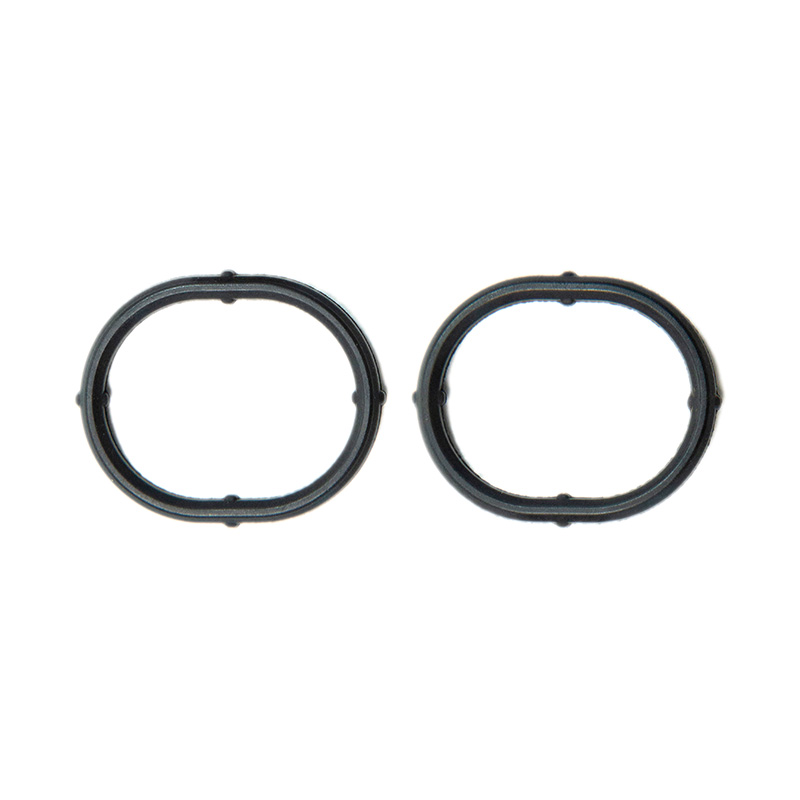+86-576-88024290
Search
04 07, 2025
Industry Updates
Within the intricate ballet of an internal combustion engine, a seemingly humble component shoulders immense responsibility: the Automobile Oil Filter Seal. Tasked with maintaining absolute sealing integrity between the oil filter housing and the engine block, this critical Automobile Oil Filter Seal functions as the primary barrier safeguarding the engine’s vital oil circulation system. Recent technical analyses and service sector reports underscore why this specific Automobile Oil Filter Seal demands meticulous attention from manufacturers, technicians, and consumers alike.
The fundamental, non-negotiable role of any Automobile Oil Filter Seal is to create a flawless, leak-proof barrier. Engine oil systems operate under significant pressure and temperature s. A high-integrity Automobile Oil Filter Seal ensures that contaminated oil entering the filter can only exit as cleaned oil, flowing back into the engine under precisely maintained pressure. The failure of this Automobile Oil Filter Seal compromises the entire lubrication circuit. "The Automobile Oil Filter Seal is the gatekeeper," emphasizes Dr. Aris Thorne, Tribology Lead at the Global Lubricants Institute. "Its integrity dictates whether filtered oil reaches bearings and camshafts or simply leaks onto the garage floor."
Advantages Realized: Stability, Efficiency, Component Longevity
When functioning correctly, a robust Automobile Oil Filter Seal delivers tangible benefits:
Pressure Stability: It maintains consistent oil pressure throughout the engine, crucial for hydrodynamic bearing function and timing chain tensioners.
Contaminant Control: By preventing unfiltered oil bypass, the Automobile Oil Filter Seal ensures that only clean oil lubricates precision components like piston rings and crankshaft journals.
Optimal Lubrication: Sustained oil flow volume, enabled by a secure Automobile Oil Filter Seal, guarantees critical surfaces receive adequate oil films, reducing friction and wear.
Consequences of Compromise: A Cascade of Damage
The failure mode of a compromised Automobile Oil Filter Seal is well-documented and severe:

Case Study 1: The Fleet Manager's Costly Oversight
A Midwest US logistics company (2023) experienced premature engine failures across several delivery vans. Investigation revealed a recurring issue: degraded aftermarket Automobile Oil Filter Seals installed during routine maintenance. These subpar Automobile Oil Filter Seals developed micro-leaks under pressure and heat cycling. The resulting gradual oil loss led to
Diminished Oil Pressure: Triggering warning lights intermittently ignored by drivers.
Insufficient Lubrication: Causing accelerated wear on connecting rod bearings.
Catastrophic Failure: Ultimately to seized engines in three vehicles within six months. The cost of engine replacements far exceeded the minimal savings from cheaper filters/seals."The specification of the Automobile Oil Filter Seal wasn't prioritized," concluded the fleet’s maintenance audit. "It proved a false economy."
Case Study 2: The Vintage Restoration Nightmare
A classic car enthusiast in Germany (2024) faced persistent low oil pressure after an engine rebuild. Despite multiple filter changes, the problem persisted. Specialist diagnosis pinpointed the culprit: an incorrect profile Automobile Oil Filter Seal installed during reassembly. This ill-fitting Automobile Oil Filter Seal allowed constant, low-level oil bypass and pressure bleed-off. While no immediate seizure occurred, the chronic under-lubrication caused measurable wear on the newly reground camshaft lobes within 2,000 kilometers, necessitating another costly teardown. The root cause? An incompatible Automobile Oil Filter Seal sourced from a generic kit.
Material Science & Manufacturing: Engineering Resilience
Modern Automobile Oil Filter Seals leverage advanced materials to meet demands:
High-Performance Elastomers: Nitrile rubber (NBR), Hydrogenated Nitrile (HNBR), and Fluoroelastomers (FKM/Viton®) offer resistance to heat, engine oil additives, and compression set.
Precision Molding: Ensures exact tolerances for the Automobile Oil Filter Seal lip and body, guaranteeing consistent sealing force against the engine mating surface.
Reinforcement: Fabric or metal elements within some Automobile Oil Filter Seal designs enhance dimensional stability under pressure.
Standards & Verification: Ensuring Seal Integrity
Recognizing the criticality, industry standards like ISO 16431 and SAE J2650 define rigorous testing protocols for Automobile Oil Filter Seals, including:
High-pressure cycling
temperature resistance
Long-term fluid compatibility
Compression set recovery
Reputable filter manufacturers subject their Automobile Oil Filter Seal to these tests, with certifications often marked on the filter housing.
Maintenance Imperative: Quality and Correct Installation
The lessons are clear:
Specify Quality: Always use filters from reputable brands known for stringent Automobile Oil Filter Seal quality control.
Inspect the Seal: Before installation, visually inspect the new Automobile Oil Filter Seal for imperfections, damage, or dryness. Lightly lubricate with clean engine oil.
Install Correctly: Ensure the old Automobile Oil Filter Seal is fully removed. Hand-tighten the new filter according to the manufacturer's specs—over-tightening can distort the Automobile Oil Filter Seal; under-tightening guarantees leaks.
Post-Change Check: Always run the engine and inspect for leaks around the filter and the Automobile Oil Filter Seal area after an oil change.
The Automobile Oil Filter Seal operates unseen, yet its performance is fundamental to engine health and longevity. As engines evolve with tighter tolerances and higher operating pressures, the demands on the Automobile Oil Filter Seal only intensify. By understanding its critical role in maintaining sealing integrity, specifying quality components, and ensuring proper installation, the industry can prevent the cascading damage that starts with a single, failed seal. This small ring of elastomer remains a true guardian of the engine's lifeblood."